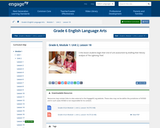
In this lesson students begin their end of unit assessment by drafting their literary analysis of The Lightning Thief.
- Subject:
- English Language Arts
- Material Type:
- Lesson Plan
- Provider:
- EngageNY
- Author:
- Expeditionary Learner
- Date Added:
- 04/04/2014
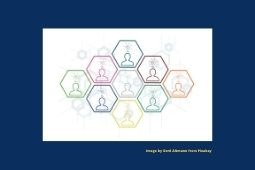
Resources tagged for Multilingual Learners.

In this lesson students begin their end of unit assessment by drafting their literary analysis of The Lightning Thief.
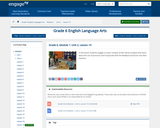
In this lesson students engage in a peer critiique of their literary analysis then learn about the use of pronouns and incorporate both the feedback and lesson into their revisions.

In this lesson students finish their end of unit assessment by incorporating revisions from the previous lessons to create a final literary analysis.
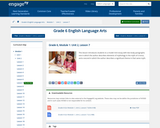
This lesson introduces students to a model mini-essay with two body paragraphs: one in which the author describes elements of mythology in the myth of Cronus, and a second in which the author describes a significant theme in that same myth.
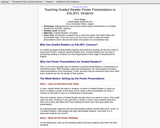
Students will create posters based upon graded readers and present the posters to classmates. The lesson provides a template for the posters, instructions for presentations, and tips on student notetaking. This resource supports English language development for English Language Learners.
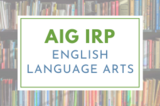
(This lesson for AIG learners follows a close reading of The Great Kapok Tree by Lynne Cherry. The classroom lesson should include independent reading of the book as well as teacher read-aloud. Students should learn vocabulary from the book and should be able to demonstrate understanding of key details in the text and their central theme or lesson (interdependence, environmental awareness.) This lesson could be part of a larger science unit encompassing the important role the rainforest plays in our environment. In this lesson, the learner will find evidence in the text that shows cause and effect relationships, reasons in the text explicitly given to support a point and will produce a written work through a RAFT assignment. In this lesson extension, he or she can choose a specific role or voice to support a point or opinion. The RAFT assignment allows the learner to apply the text to the real world and a real audience. This lesson was developed by NCDPI as part of the Academically and/or Intellectually Gifted Instructional Resources Project. This lesson plan has been vetted at the state level for standards alignment, AIG focus, and content accuracy.
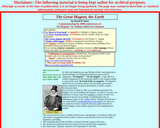
This is a website that serves as an online textbook to tell the story of William Gilbert, English physicist during the time of Queen Elizabeth I, and the history of the discovery of Earth's magnetism. Learners can read about historical studies of magnetism, connections between sunspot activity and the Earth's magnetic field, the internal dynamo responsible for generating the Earth's magnetic field, magnetic polarity and reversals, and geomagnetic storms.
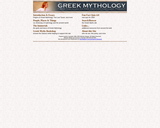
This website was designed to help learners acquire a greater understanding of Greek Mythology. The site includes critical essays, a Greek terminology/character glossary, deities information list, trivia game and links to other Greek mythology resources.
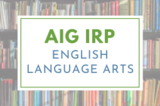
This activity for gifted learners follows close reading of Bats: Creatures of the Night by Joyce Milton and the poem “A Bat is Born” by Randall Jarrell. At the end of the reading of Bats: Creatures of the Night and “A Bat is Born,” all students will complete a Venn diagram that is differentiated based on readiness, using the two texts. This activity should be assigned to students who not only demonstrate a solid understanding of the book and poem, but also show a keen ability to make connections between the big ideas presented texts. Students will analyze the non-fiction and poetry pieces, with a special focus on the commonalities between bats & humans and the commonalities between the texts, as well. This will culminate in the creation of a triple Venn diagram. This lesson was developed by NCDPI as part of the Academically and/or Intellectually Gifted Instructional Resources Project. This lesson plan has been vetted at the state level for standards alignment, AIG focus, and content accuracy.
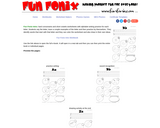
Fun Fonix Intro: hard consonants and short vowels worksheets with alphabet writing practice for each letter. Students say the letter, trace a couple examples of the letter and then practice by themselves. They identify words that start with that letter and they can color the worksheet and also draw in their own ideas.
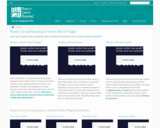
This website has free animation videos that help kids visualize which parts of high frequency words can be decoded/encoded and which parts need to be learned "by heart'.
I have used this resource to teach first graders how to map sounds they hear to letters they know and then to write the grapheme they need that doesn't follow our typical pattern. We can watch the video, read the word and write one in a 10 minute sequence.

In this lesson, students will understand the importance of the Native American Cultural Heritage through the lenses of their own home country indigenous cultural heritage.

This resource provides a lesson designed to assist learners with acquiring skills needed to differentiate between real and fictious, possibly malicious, websites. Students will evaluate hoax sites prior to outlining and designing one of their own. It is expected that this lesson will help students to better recognize trustworthy sites for online reading and research.
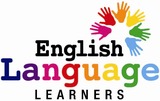
This resource is a creative tool to allow English Language Learners or really any students the opportunity to explore and reflect, in a variety of ways, about their hopes and dreams. This is not only a nice tool to use to practice the different language domains: listening, speaking, reading, and writing but it also is a nice tool for Social Emotional Learning, which is incredibly important duing this difficult time in the world.
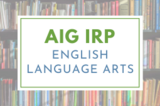
This activity for gifted learners might serve as a writing activity as part of a larger poetry unit. Students will take part in close readings of a variety of poems throughout the unit. In this activity, gifted learners would work either individually or with a partner to close read “Stopping by Woods on a Snowy Evening” by Robert Frost. They will then work to decipher the poem, it’s meaning, and the point of view from which it’s told. Finally, they will “reframe” the original poem and it’s point of view, resulting in a poem told from the horse’s perspective. This lesson was developed by NCDPI as part of the Academically and/or Intellectually Gifted Instructional Resources Project. This lesson plan has been vetted at the state level for standards alignment, AIG focus, and content accuracy.
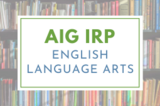
This activity for gifted learners might serve as part of a larger poetry unit. Students will take part in close readings of a variety of poems throughout the unit. This research project should be assigned to students who demonstrate solid understanding of poetry (figurative language, structure, meaning) and are ready for a challenge as they work individually, or with a partner, to close read “Something Told the Wild Geese” by Rachel Field and then investigate…What is the “something”? Using the information they discover in their research, they will create a complementary poem to “Something Told the Wild Geese,” explaining the scientific principal behind each stanza in verse which they will read to the class. This lesson was developed by NCDPI as part of the Academically and/or Intellectually Gifted Instructional Resources Project. This lesson plan has been vetted at the state level for standards alignment, AIG focus, and content accuracy.

These resource offers a nice visual and description of theme. It would be a helpful anchor for all students but especially English learners.

An interactive, grade-specific spelling bee.
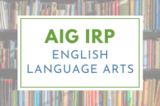
This activity for gifted learners follows close reading of Sarah, Plain and Tall by Patricia MacLachlan. At the end of the reading of Sarah, Plain and Tall, all students will complete a timeline of events & characters throughout the novel that is differentiated based on readiness. This project should be assigned to students who not only demonstrate a solid understanding of the novel, but also show keen insight into the main characters’ development (traits, motivations, feelings, etc.) throughout the novel. Students will analyze the characters’ development through the lens of the American frontier/pioneer period in our nation’s history, determining possible relationships between events during this time period and character development in the novel, through both research and careful reflection of characters/events in the novel. This will culminate in the creation of a dual timeline. This lesson was developed by NCDPI as part of the Academically and/or Intellectually Gifted Instructional Resources Project. This lesson plan has been vetted at the state level for standards alignment, AIG focus, and content accuracy.
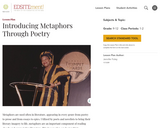
This resource includes a lesson and two accompanying activities designed to assist learners with working with metaphors on a deeper level. Beginning with a quick review, the lesson directs learners to read noted poetry and analyze deeper meaning within given metaphors. As a culminating activity, learners are asked to write their own metaphors using abstract concepts while bein provided mediums for comparison.